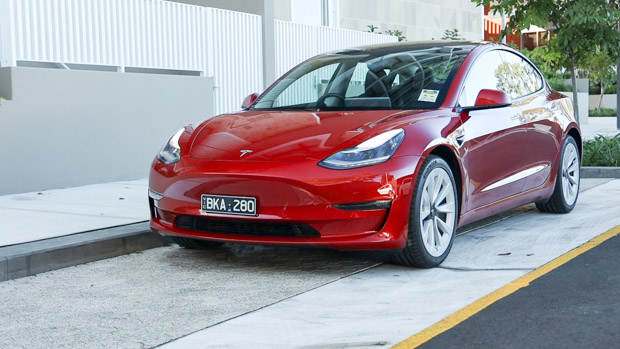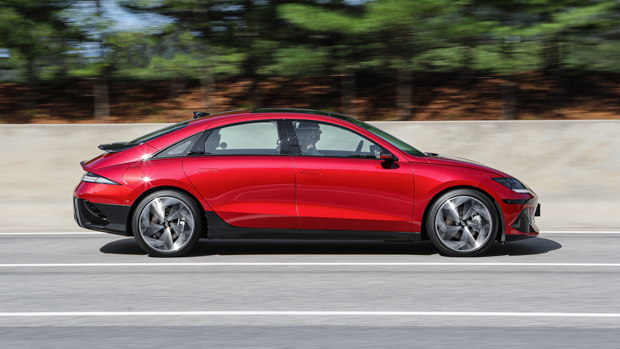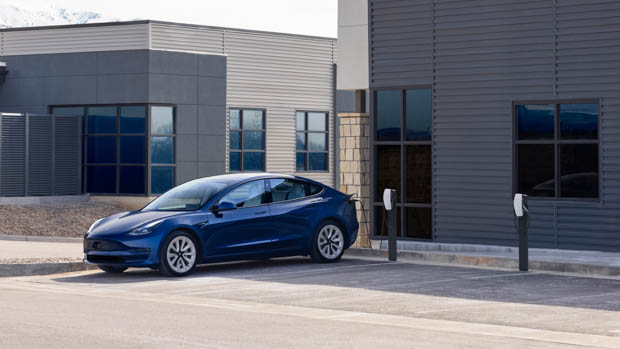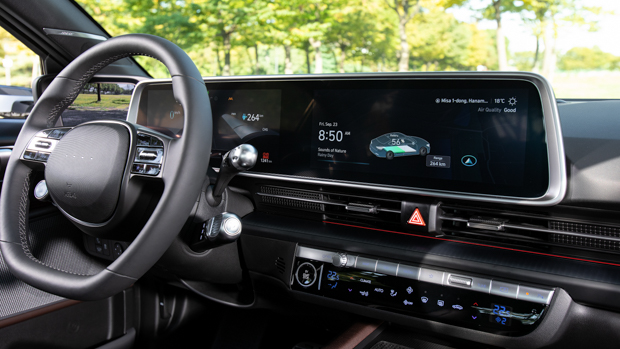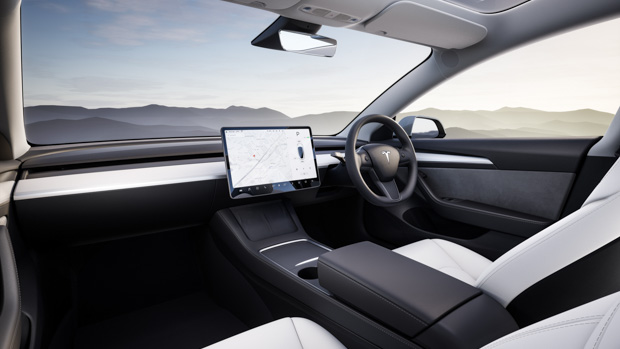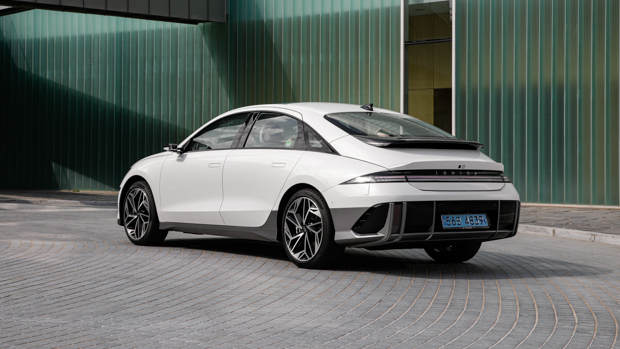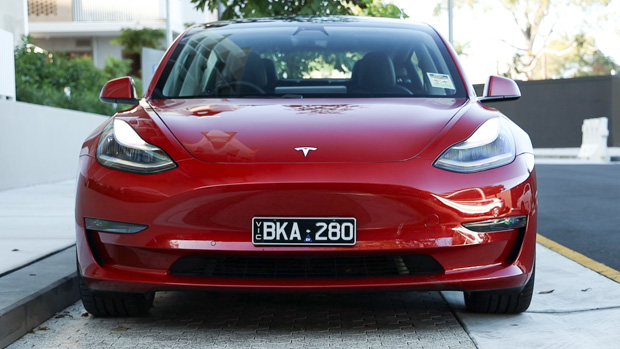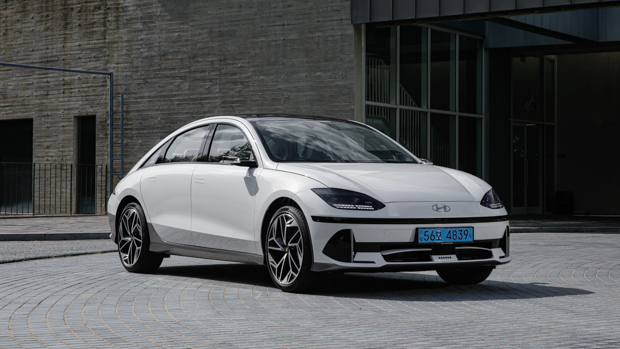-
Car Reviews
- Car News
-
Car Comparisons
Latest comparisons
- Chasing Deals
With the Hyundai Ioniq 6’s arrival looming, how does it stack up against the cheapest version of Tesla’s extremely popular Model 3
Set to launch this month, Hyundai’s highly anticipated Ioniq 6 EV is is getting ready to take on the popular Tesla Model 3 in the electric sedan space.
With similar equipment on offer and similar entry prices; Australian electric vehicle buyers can look forward to cross-shopping between the two in the very near future.
But which is more worth your cash? Well, a full verdict will have to wait for a thorough Chasing Cars comparison test but for now we’ve compared these cars spec-for-spec to find out which one stacks up better on paper.
Late last month, Hyundai Australia revealed pricing for the upcoming Ioniq 6, with the entry-level Dynamiq grade coming in at $74,000 before on-road costs.
A drive-away price of $81,390 has also been provided, but Hyundai notes that this could change before arrival.
As for the Tesla, a recent price increase saw the entry-level rear wheel drive jump $400 to $64,300 before on-road costs, making it almost $10,000 cheaper than the Hyundai before taxes are added.
The Hyundai Ioniq 6 Dynamiq makes use of a single electric motor on the rear axle that makes 168kW/350Nm.
As you’d expect, this makes it exclusively rear-wheel drive, and Hyundai claims a 0-100km/h time of 7.4-seconds.
It’s a similar story for the entry-level Tesla, which gets a single electric motor on the rear axle making 190kW/375Nm.
Tesla claims that this rear-wheel drive Model 3 is able to hit 100km/h from a standing start in just 6.1-seconds.
As standard, the Hyundai Ioniq 6 comes with a 77.4kWh battery across the range, and in the case of the Dynamiq, it provides up to 614km of driving range, according to the typically more accurate WLTP testing cycle.
The Ioniq 6 can charge at up to 350kW when using a DC fast charger, allowing it to be topped up from ten to 80 percent in 18 minutes. In terms of AC charging, it’s capped at a maximum rate of 11kW.
The Tesla is equipped with a 57.5kWh battery that allows the rear-wheel drive Model 3 to drive up to 491km (WLTP) on a single charge.
As for charge rates in the Model 3, it’s rated to 170kW DC, and 11kW AC.
Standard kit on the inside of the Ioniq 6 Dynamiq includes a 12.3-inch infotainment display with wired Apple Carplay and Android Auto, a 12.3-inch digital cluster, and a eight-speaker Bose sound system.
It also gets wireless phone charging and ten-way powered leather-appointed seats that are heated in the front.
The Tesla’s main point of difference on the inside is the large 15-inch landscape-mounted display that takes care of both driving information and infotainment.
Apple CarPlay and Android Auto is not available in the Model 3, with the EV instead using Tesla’s own software to handle multimedia and other features.
Other interior features include 12-way powered faux-leather seats, twin wireless phone chargers, and heated front and rear seats.
It’s also worth noting that a full glass roof is standard across the Model 3 range, whereas buyers will have to opt for the $83,500 (before on-road costs) Ioniq 6 Techniq to get the same.
For the Ioniq 6 Dynamiq, Hyundai’s four-year “lifetime” service plan costs $1120, with a scheduled service every 24 months or 30,000km.
As for the warranty, the Ioniq 6 is covered by Hyundai Australia’s overarching five year/unlimited kilometre warranty. It’s worth noting that the battery warranty is separate, lasting eight years, or 160,000km.
Tesla doesn’t disclose service prices for its Model 3 but has previously advised Chasing Cars that cars only needed to come in for brake fluid changes and air conditioning services every few years.
In Australia, Tesla’s warranty covers the Model 3 rear-wheel drive for eight years, or 160,000km.
The Tesla Model 3 will likely be the only EV of these two to qualify for government rebates, due to the higher price of the Hyundai Ioniq 6.
In Victoria, buyers should be able to get $3000 back on a Model 3, as long as it’s one of the first of 20,000 sold in the State ($68,740 price cap) since the scheme was announced.
The same goes for New South Wales, but the vehicle cap is higher at 25,000 ($68,750 price cap).
In South Australia, there’s a $3000 rebate on offer for the first 7000 EVs registered ($68,750 price cap).
There’s a $3500 rebate on offer for the first 10,000 EVs registered in Western Australia ($70,000 price cap).
This rebate drops to $1500 in the Northern Territory, with no limit on vehicle registrations.
Tasmania and the Australia Capital Territory have no direct rebate programs, and Queensland’s price cap of $58,000 means that even the Model 3 doesn’t make the cut.
As for Hyundai Ioniq 6 availability, the Korean brand is expecting to see 300 units land locally, which will be made available to order from February 22. Many more are expected to follow, but exact numbers are yet to be confirmed.
As for Tesla Model 3 rear-wheel drive availability, the brand states that expected delivery is between February and May of this year, meaning buyers could be facing a wait of up to four months.
Over the last six months, Tesla has delivered 1506 Model 3s on average each month, with numbers wildly fluctuating based on availability. We can expect these sporadic numbers to continue, and it’s likely that Tesla will see similar sale volume throughout the year.
As we said at the start of this article, a full verdict will have to wait until we have both of these cars on test, but for now both are sure to be good options.
Hyundai brings a lot to the table by offering over 600km of range right off the bat, along with faster charging and a generious level of specification along with a suite of modern tech.
For us, it makes the Ioniq 6 that much more approachable for first-time EV buyers and it may do a lot better in Australia when our limited infrastructure still leaves such large gaps between chargers.
However its hard to ignore the crica-$10,000 gulf between the Model 3 and Ioniq 6, plus if you are lucky enough to nab yourself a rebate the price could drop even further.
So for now, it’s the Ioniq 6 that takes the win if you’ve got the extra cash but the Model 3 is certainly still a good option – especially if you can get your hands on one sooner.
Latest news
About Chasing cars
Chasing Cars reviews are 100% independent.
Because we are powered by Budget Direct Insurance, we don’t receive advertising or sales revenue from car manufacturers.
We’re truly independent – giving you Australia’s best car reviews.
